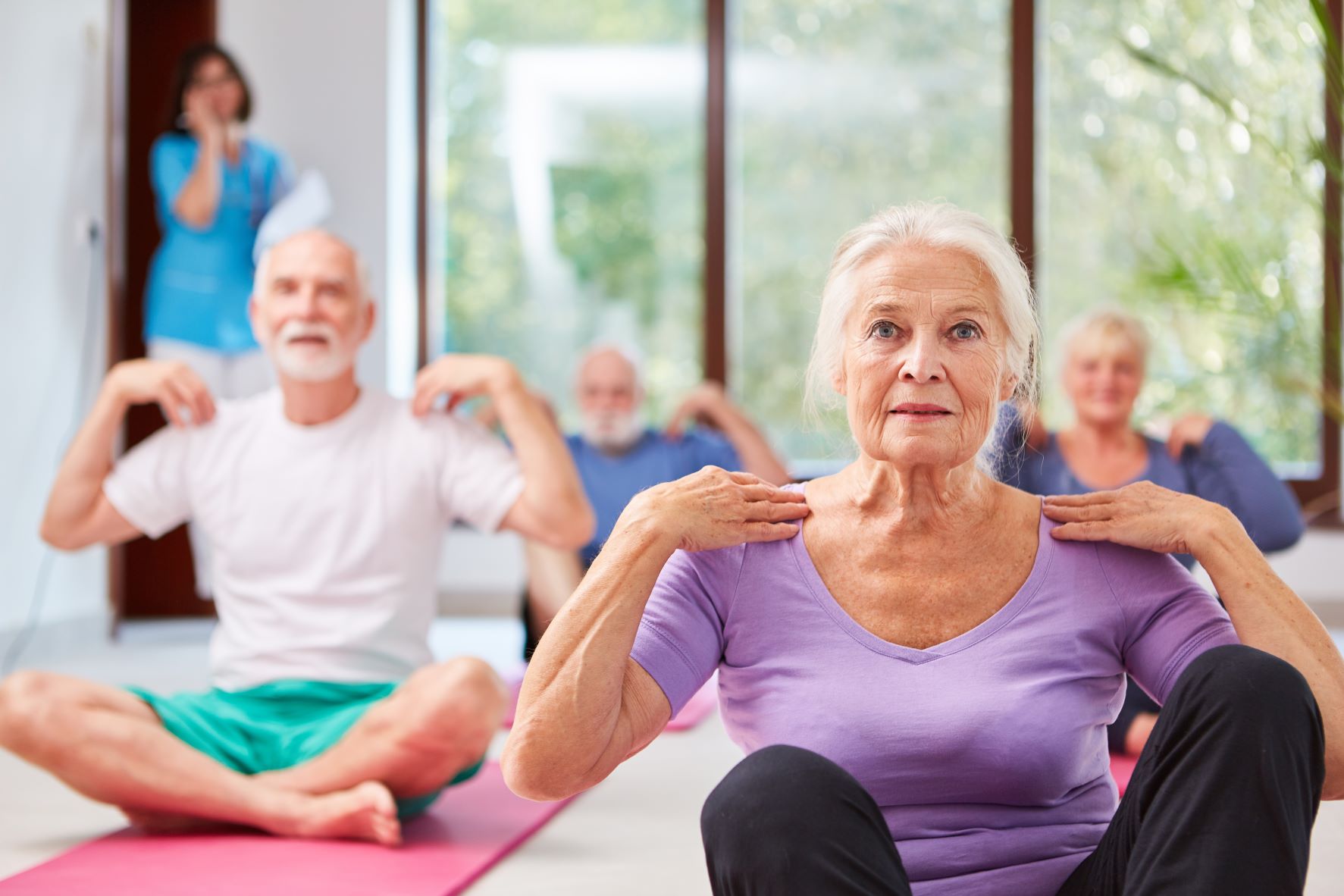Exercise for Older Adults
THE PHYSICAL ACTIVITY LEVELS OF OLDER AUSTRALIANS
For Australians aged 65 and over, physical activity becomes important in maintaining energy levels, increasing joint movement, preventing or managing mental health problems (by reducing stress and anxiety), and improving mood and memory function. However, despite the significant benefits of being physically active, the physical activity levels of many Australians are less than the level recommended to gain a health benefit.
In Australia:
» For people aged 65 and over, 75% were not sufficiently active.
» For females, 77% were not sufficiently active.
» For males, 74% were not sufficiently active.
Exercise provides a wide range of benefits, the main being the management and treatment of chronic conditions, and with older age comes greater incidence of chronic illness and disease. In fact, 3 in 5 Australians (60%) aged 65 years and over have at least one chronic condition and chronic disease is a leading cause of disability in older adults. With exercise playing an important role in heathy ageing – let’s take a closer look.
WHAT ARE THE PHYSICAL ACTIVITY GUIDELINES?
Australia has developed Physical Activity and Sedentary Behaviour Guidelines which outline the minimum
amount of physical activity required for all ages, including older Australians.
As older people make up a considerable proportion of Australia’s population – in 2017, over 1 in 7
Australians were aged 65 years and over – it’s important they have their own set of physical activity
recommendations.
These recommendations for older Australians (those aged 65 years and over, or aged 55 years and over
for Aboriginal and Torres Strait Islander peoples) state that older people should be active every day in
as many ways as possible, doing a range of physical activities that incorporate fitness, strength, balance
and flexibility.
65
and over
It’s recommended that they should complete at least 30 minutes of moderate intensity physical activity
on most, preferably all, days, no matter their age, weight, health problems or abilities.
What sort of physical activities does the recommendations include?
AEROBIC EXERCISES
Aerobic exercise is any movement where your breathing and heart rate increases for a sustained period of time. This then improves your body’s cardiorespiratory fitness which is how well your heart, lungs and muscles work together to keep your body active and healthy over an extended period of time. Aerobic exercises should be performed on most days of the week, aiming to achieve around 30 minutes, or at least 150 minutes of exercise across the week, at a moderate intensity. The benefits of aerobic training include:
» Increased efficiency of respiration
» Improved blood volume, distribution and delivery to muscles
» Increased amount of blood pumped from the ventricle during each contraction of the heart
» Increased volume of blood pumped by the heart each minute
» Decreased resting heart rate
» Strengthened ligaments, tendons and bones
» Decreased anxiety and stress
» Improved overall mood
Activities should be weight bearing where possible (such as walking or stepping), however, other forms of training such as stationary or recumbent cycling may be more appropriate if there is a significant falls risk. Typical examples include walking, cycling, swimming or any form of physical activity that produces an increased heart rate.
STRENGTH EXERCISES
Strength training, or resistance training, can assist with slowing the ageing process. Older adults should aim to complete strength training two to three days a week, of 8-10 exercises involving major muscle groups, with a day of rest between workouts. The benefits of strength training include:
» Increased lean muscle mass
» Preserved/increased bone density and joint health
» Increased balance and decreased risk of falls or injury
» Prevention of muscle loss associated with ageing
» Improved sleep
» Improved mental health and reduced depression
» Reduced risk and symptoms of some chronic diseases
» Improved cognitive function
» Potential to reduce risk of dementia, Alzheimer’s and Parkinson’s disease
It can be completed by using one’s own body-weight or household items, lifting weights, or using machines, rubber bands or balls. Typical examples include carrying heavy shopping bags, yoga, Pilates, Tai Chi, push-ups, sit-ups, heavy gardening, such as digging and shovelling, etc.
BALANCE EXERCISES
It’s recommended that older adults do at least two to three sessions of balance exercises per week. Research points to the effectiveness of balance and functional exercises, plus resistance exercises, in reducing falls in older adults. Along with the physical benefits such as enhanced stability, balance exercises may help improve mental functioning, including memory and spatial cognition.
Balance training should get progressively harder by progressing from stable to less stable positions and using less hand-rail support, as well as adding cognitive tasks (such as naming as many items in a category or performing subtractions).
Incorporating stretching into your balance exercises can then also increase your flexibility which is vital to active ageing and reducing pain when moving. Typical examples include shifting your weight with your feet, practicing walking on a tightrope, the flamingo stand, the tree pose, etc.
INCIDENTAL PHYSICAL ACTIVITY
Incidental physical activity is the small amounts of activity that build up in small amounts over a day and
tend to be less structured than planned exercise training. Incidental movement is still important in the
daily lives of older adults and can help contribute to daily physical activity recommendations.
Typical examples include gardening, housework, walking to the bus or grocery store, walking up the
stairs, etc.
Source: Australian Institute of Health and Welfare
Download: ESSA-Exercise-for-Older-Adults-eBook_2020_1678328674.pdfBack
